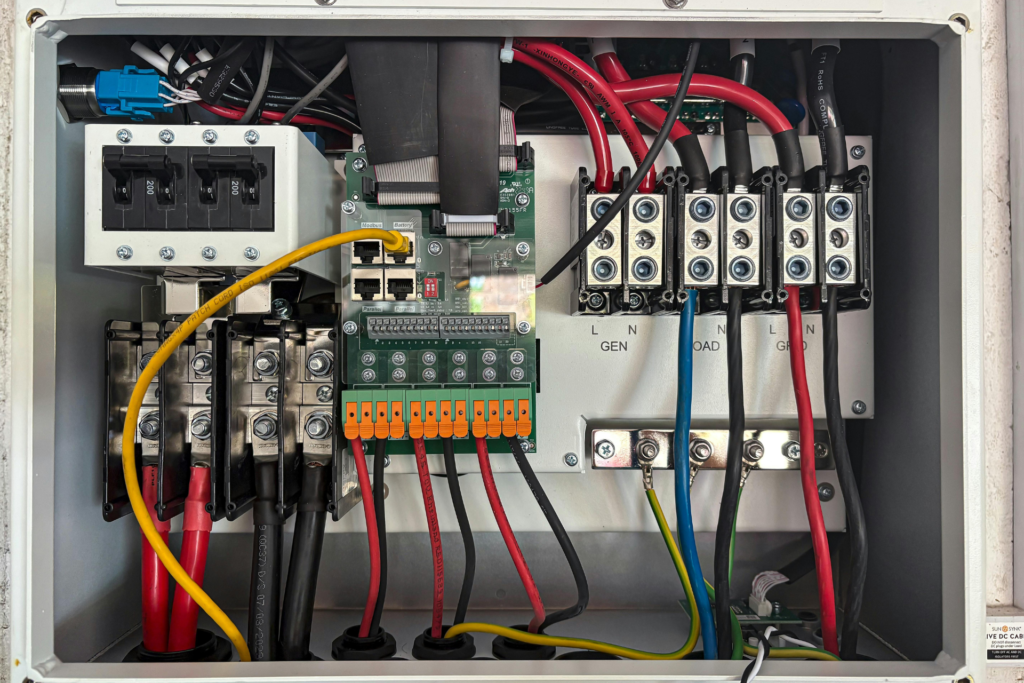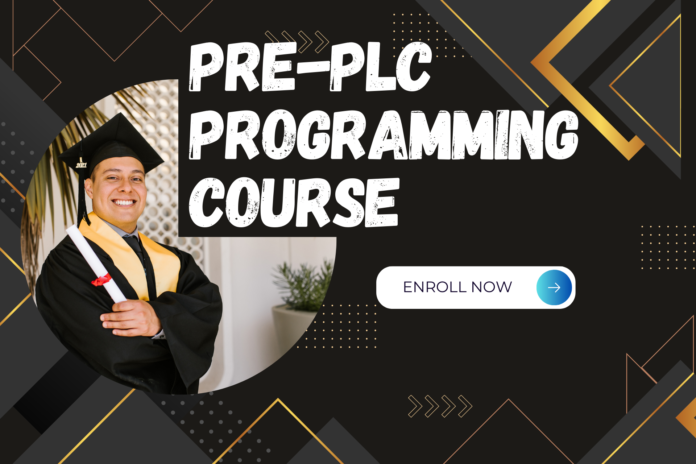PLCs are industrial computer control systems that can monitor the state of different input devices and control output devices. The role of Programmable Logic Controllers (PLCs) has become more critical than ever before. PLCs are the unsung heroes behind the seamless operation of automated systems in industries ranging from manufacturing to energy management, ensuring everything runs with precision and reliability. As the backbone of modern automation, mastering PLCs not only opens doors to exciting career prospects but also equips you with the ability to innovate within this dynamic field. Whether you’re involved in designing sophisticated industrial systems or optimizing home automation projects, a deep understanding of essential to stay competitive in a technology-driven world.
Programmers must acquire the fundamental knowledge and skills to operate these highly specialized computer systems. With so many courses available, each promising to teach you how to program and integrate systems, choosing the right one can be difficult. This blog is here to simplify that process. We’ve thoroughly reviewed some of the best PLC courses on Udemy, providing detailed insights into their content, teaching style, and suitability for various skill levels. Whether you’re a complete beginner eager to break into industrial automation or a seasoned professional looking to refine your skills, this guide will help you find the perfect course to accelerate your journey in mastering PLCs.
“Now with Courseific you can search for online courses in seconds-Click this Text to find out“
Programming PLC in 3 Days – Siemens S7-1200 Course
The “Programming PLC in 3 Days – Siemens S7-1200 Course” is designed for those who want to quickly and effectively learn how to program Siemens S7-1200 PLCs. This course promises to take you from zero to proficient in just three days, making it ideal for individuals who need to learn PLC programming on a tight schedule. The course is comprehensive, covering all essential aspects of Siemens S7-1200 programming.
The course starts with an introduction to the Siemens S7-1200 hardware, including setup and configuration. You’ll learn how to install the necessary software and connect your to your computer. The instructor provides clear, step-by-step instructions that make it easy to get started, even if you have no prior experience with PLCs.
As you progress through the course, you’ll dive into the fundamentals of PLC programming. The instructor covers basic programming concepts, such as creating and editing ladder logic diagrams, working with function blocks, and setting up communication protocols. Each lesson is accompanied by practical exercises that reinforce your learning and help you build real-world skills.
One of the standout features of this course is its focus on hands-on learning. You’ll engage in a series of projects that involve programming and troubleshooting Siemens S7-1200 PLCs. These projects are designed to simulate real-world scenarios, giving you practical experience and confidence in your ability to program PLCs effectively.
Pros:
- Intensive, fast-paced learning.
- Hands-on projects that simulate real-world scenarios.
- Clear, step-by-step instructions.
Cons:
- May be too fast-paced for complete beginners.
- Focuses solely on Siemens S7-1200, not covering other PLC brands.
Ideal for: Individuals who need to quickly learn Siemens S7-1200 PLC programming and prefer a hands-on, project-based approach.
Safety Controller (SC10-2ROE)

“Safety Controller (SC10-2ROE)” is a specialized course focusing on the SC10-2ROE safety controller. This course is perfect for professionals who need to understand the principles and applications of safety controllers in industrial settings. It provides a thorough introduction to the SC10-2ROE, including its setup, configuration, and programming.
The course begins with an overview of the SC10-2ROE hardware, explaining its features and capabilities. You’ll learn how to set up and configure the controller, as well as how to integrate it into your existing automation systems. The instructor provides detailed explanations and practical examples, making it easy to follow along.
As you progress through the course, you’ll delve into the programming aspects of the SC10-2ROE. The instructor covers key programming concepts, such as creating safety programs, setting up safety zones, and configuring emergency stop functions. Each lesson is accompanied by hands-on exercises that allow you to apply what you’ve learned in a practical context.
A significant portion of the course is dedicated to real-world applications of the SC10-2ROE. You’ll learn how to use the controller to enhance the safety and efficiency of your automation systems, ensuring compliance with industry standards and regulations. This practical focus ensures that you not only understand the theoretical concepts but also know how to implement them effectively in your workplace.
Pros:
- Focus on safety controllers and their applications.
- Hands-on exercises that reinforce learning.
- Detailed explanations and practical examples.
Cons:
- Specialized course that may not be relevant to all users.
- Requires some prior knowledge of PLCs and automation systems.
Ideal for: Professionals who need to understand and implement safety controllers in industrial automation systems.
Pre-PLC Programming Course: Before You Start Programming
The “Pre-PLC Programming Course: Before You Start Programming” is designed to provide a solid foundation for those who are new to PLC programming. This course is ideal for complete beginners who want to understand the basics of PLCs before diving into more complex programming concepts. The instructor offers a clear and concise introduction to the fundamental principles of PLCs.
The course begins with an overview of what PLCs are and how they are used in various industries. You’ll learn about the basic components of a PLC system, including the processor, input/output modules, and power supply. The instructor provides simple, easy-to-understand explanations that make it accessible for beginners.
As you progress through the course, you’ll explore the basic principles of PLC programming. The instructor covers essential concepts such as logic gates, timers, and counters, providing practical examples to illustrate each point. These foundational topics are crucial for understanding how to program and troubleshoot PLCs effectively.
A unique aspect of this course is its focus on preparing you for more advanced PLC programming courses. The instructor provides valuable tips and insights on what to expect in more advanced courses, as well as how to set yourself up for success. This preparatory approach ensures that you have a strong foundation before moving on to more complex topics.
Pros:
- Ideal for complete beginners.
- Clear, concise explanations of fundamental concepts.
- Prepares you for more advanced PLC programming courses.
Cons:
- May be too basic for those with some prior knowledge.
- Limited hands-on exercises.
Ideal for: Complete beginners who want to understand the basics of PLCs and prepare for more advanced programming courses.
Auto 101: An Introduction to Automation
“Auto 101: An Introduction to Automation” is a comprehensive course designed to introduce you to the fundamentals of automation. This course is perfect for those who are new to the field and want to understand the basics of automation systems, including PLCs. The instructor provides a broad overview of automation concepts, making it an ideal starting point for beginners.
The course begins with an introduction to the principles of automation, including an overview of the different types of automation systems and their applications. You’ll learn about the key components of an automation system, such as sensors, actuators, and controllers. The instructor provides clear explanations and practical examples to illustrate each concept.
As you progress through the course, you’ll explore the basics of PLC programming. The instructor covers essential programming concepts, such as ladder logic, function blocks, and structured text. Each lesson is designed to build your understanding gradually, with practical exercises that reinforce your learning.
A significant portion of the course is dedicated to hands-on projects that illustrate the principles of automation. You’ll engage in projects that involve programming and troubleshooting PLCs, as well as integrating them with other automation components. These projects are designed to give you practical experience and confidence in your ability to work with automation systems.
Pros:
- A comprehensive introduction to automation concepts.
- Hands-on projects that reinforce learning.
- Clear explanations and practical examples.
Cons:
- May be too broad for those looking for a focused PLC programming course.
- Requires some additional components for hands-on projects.
Ideal for: Beginners who want a comprehensive introduction to automation and PLC programming.
Conclusion
Mastering PLC programming is more than just a valuable skill—it’s a strategic move that positions you at the forefront of the automation revolution. The courses highlighted in this review are designed to cater to a wide range of learners, from novices eager to explore the fundamentals to experienced professionals looking to deepen their expertise in advanced systems. Each course offers a blend of theoretical knowledge and practical application, ensuring that you gain not only an understanding of PLC concepts but also the ability to implement them in real-world scenarios. Whether you’re learning to program a Siemens S7-1200 or navigating the complexities of safety controllers, these courses provide the tools you need to succeed in a rapidly evolving field.
Choosing to invest in one of these top-rated Udemy courses, you’re not just enhancing your technical abilities—you’re paving the way for future career growth in industries where automation is key. The skills you develop through these courses will empower you to design, program, and troubleshoot PLC systems with confidence, making you an indispensable asset in any industrial setting. As the demand for skilled PLC programmers continues to rise, now is the perfect time to advance your expertise and position yourself as a leader in industrial automation. Take the next step in your professional journey by mastering PLC programming, and unlock a world of possibilities in the ever-expanding automation landscape.

